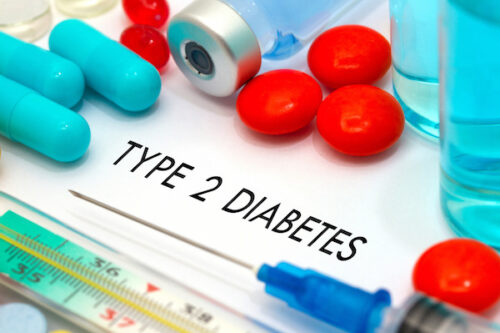John McDougall, MD: Marketing Dairy and Disease
Get a first-hand look at one of the most thought-provoking lectures given during the 12-Day McDougall Program, Marketing Dairy & Disease.
In this talk, Dr. McDougall discusses how the dairy industry has created marketing campaigns to sell their products citing research they fund themselves – yet, the negative effects of dairy are still shown in the results. Industry advertises milk as a good source of calcium when in fact dairy is detrimental to bone health and the cause of numerous diseases. Dr. McDougall breaks down the facts and delivers the truth about the effects of dairy on health.
The Dairy Industry is really big business – with sales of over $11 billion for milk and $16 billion for cheese annually in the USA alone – so you might expect hard line marketing from them – but would you expect them to aggressively sell their products if they were known to be harmful to people – especially to women and children?
The Dairy Management Inc., whose purpose is to build demand for dairy products on behalf of America’s 80,000-plus dairy producers, has just released the Dairy Checkoff 2003 Unified Marketing Plan (UMP) with a budget of $165.7 million. The United Marketing Plan explains, “This ongoing program area (referring to the section Dairy Image/Confidence) aims to protect and enhance consumer confidence in dairy products and the dairy industry. A major component involves conducting and communicating the results of dairy nutrition research showing the healthfulness of dairy products, as well as issues and crisis management.”
A significant portion of the money from the 2003 Unified Marketing Plan is specifically targeted to children ages 6 to 12 and their mothers. The goal is “to guide school-age children to become life-long consumers of dairy products, 2003 activities will target students, parents, educators and school foodservice professionals.” (Similar words and intentions have been attributed to the tobacco industry.) All this marketing is working, too: annual fluid milk consumption among kids 6 to 12 increased to 28 gallons per capita – the highest level in 10 years. Children under 18 drink 46% of the milk consumed in the USA.
Realize that when I say milk in this article, I’m also implicating all dairy products that are made from milk: non-fat milk, low-fat milk, buttermilk, cheeses, cottage cheese, yogurt, ice cream, whey, kefir, and butter. All of them share a similar nutritional profile (plus or minus the fat, protein, and sugar), and as a result, all of them contribute to a wide range of health problems.
Will the UMP Inform You of the Contamination? E. Coli, AIDS and Leukemia Viruses?
Last month I left you with some very disturbing facts about the contamination of milk with loads of bacteria and millions of white blood cells (pus cells) which are there to help fight off the infections found in cows and milk (see the April 2003 Newsletter found at www.drmcdougall.com). Will the 2003 Unified Marketing Plan specify money to inform you of this upsetting information? You will never see an advertisement with a famous movie star proudly wearing a white mustache, properly labeled as containing 300,000 white blood cells and 25,000 bacteria.
Dairy products were the foods most often recalled by the U.S. Food and Drug Administration (FDA) from the period October 1, 1993 through September 30, 1998 because of contamination with infectious agents, mostly bacteria. They are commonly tainted with disease-causing bacteria, such as salmonella, staphylococci, listeria, deadly E. coli O157 and Mycobacterium paratuberculosis (possibly one of the agents causing Crohn’s disease; a form of life-threatening chronic colitis) – as well as viruses known to cause lymphoma and leukemia-like diseases, and immune deficiency in cattle.
AIDS and Leukemia Viruses
Dairy cattle are infected with bovine immunodeficiency viruses (BIV) and bovine leukemia viruses (BLV), worldwide. (Bovine immunodeficiency viruses can also be properly referred to as bovine AIDS viruses.)
- In the United States, results show an average 40% of beef herds and 64% of dairy herds are infected with BIV.
- In Canada, the infection rate is 70% and in Argentina the rate is 84% for BLV.
- Herds infected with the BIV are usually infected with the leukemia virus (BLV) also.
- Both viruses can cross species lines thus infecting other animals, like sheep, goats, and chimpanzees – and they develop disease.
- Nationwide and worldwide, leukemia is more common in the higher dairy consuming populations.
- An increased incidence of leukemia has been found among dairy farmers in multiple studies.
- BIV infection has been reported in a person.
- The bovine leukemia virus has been classified in the same group as the Human T-cell Leukemia/Lymphotropic virus type 1 (HTLV-1), which is known to cause leukemia and lymphomas in humans (Adult T-cell leukemia/lymphoma).
- BIV is structurally and genetically closely related to human immunodeficiency virus (HIV) type-1 (the virus causing human AIDS).
- Pasteurization kills many types of microorganisms, but it is not foolproof. There is also concern that pasteurization may break the viruses into fragments that may become even more dangerous.
Has it been shown that the bovine AIDS and/or leukemia viruses will infect you and cause disease? No. Nor has it been proved that they will not. Compared to the efforts to try to convince you of the bone-building benefits of milk, almost nothing has been spent to establish whether or not it is safe to feed your family dairy products teeming with bovine immunodeficiency and bovine leukemia viruses (and/or viral fragments). Some countries take this matter very seriously. For example, in many European countries, health officials have conducted programs to eradicate infected herds – Finland’s program has successfully eradicated BLV from its cattle.
If you live in a region with a high incidence of herd infection with these viruses you can be pretty sure you will be consuming dairy products containing whole viruses or fragments of these viruses, since the milk from many dairy farms is mixed in large vats at the dairy factory before processing and packaging. Since the industry will not act responsibly in many countries, consumers are left with one choice – eliminate all dairy products from their diet. If eliminating dairy products would prevent even a small risk of human disease, it would be well worthwhile, especially since, as you learned in the April 2003 McDougall Newsletter, they are completely unnecessary for excellent health.
Will the UMP Market the Pain and Suffering Caused Children?
The Dairy Management Inc. has specifically targeted children in their campaign. This will raise no public concern, because most people consider cow’s milk the healthiest of all food choices, especially when it comes to children. Over 25% of children are overweight in Western countries and cow’s milk, cheese, yogurt, ice cream, butter, and sour cream, with all their fat and calories, contribute greatly to this deadly epidemic. Many of these overweight children are now developing type-2 diabetes. However, the most common variety of diabetes found in children is still type-1 or insulin dependent diabetes (IDDM).
Type-1 Diabetes
The evidence incriminating cow’s milk consumption in the cause of type-1 diabetes is sufficient to cause the American Academy of Pediatrics to issue these warnings, Early exposure of infants to cow’s milk protein may be an important factor in the initiation of the beta cell (insulin-producing cells of the pancreas) destructive process in some individuals.” “The avoidance of cow’s milk protein for the first several months of life may reduce the later development of IDDM or delay its onset in susceptible people.”
Exposure to cow’s milk protein early in life when the intestinal tract is immature sometimes results in the milk protein entering the blood stream where antibodies to this foreign substance cow’s milk are made by the immune system. Unfortunately these same antibodies also attack the insulin-producing cells of the pancreas. By glassful of milk after spoonful of ice cream over a period of about 5 to 7 years the child destroys his or her own pancreas – and is left with a lifelong life-threatening handicap: diabetes. The pancreas is forever destroyed and the child will have to take insulin shots daily. Complications such as blindness kidney failure and heart disease will be a real threat during his or her shortened lifespan. (See my July 2002 McDougall Newsletter for a discussion of type-1 diabetes).
Constipation
Not as life-threatening as diabetes but for some as mentally and physically distressing is chronic constipation. As a doctor who has cared for hundreds of children I can tell you they suffer with pain bleeding hemorrhoids and embarrassment. The causal effects of cow’s milk were clearly demonstrated in a study of 65 severely constipated children published in the New England Journal of Medicine. These boys and girls complained of only one bowel movement every 3 to 15 days and many didn’t even respond to strong laxatives (lactulose and mineral oil). Forty-four of the 65 (68%) found relief of their constipation when taken off the cow’s milk. Evidence of inflammation of the bowel was found on biopsy and anal fissures and pain were commonly associated with the constipation – elimination of the cow’s milk solved these problems. When cow’s milk was reintroduced into their diet 8 to 12 months later all of the children developed constipation within 5 to 10 days. For constipation alone cow’s milk should be banned from the School Milk Programs worldwide.
Rhinitis and Otitis Media
The multitude of snotty-nosed kids frequently visiting the pediatrician’s office for ear infections is much more obvious than the constipated crowd and these problems less devastating than type-1 diabetes but these complaints also can be due to consuming the foreign proteins intended for calves. In addition these same children are likely to suffer from gastroesophageal reflux asthma and/or eczema from their unnatural habit of drinking cow’s milk.
Diseases of Foreign Protein
Many conditions can be traced back to reactions to cow’s milk. Milk contains more than 25 different proteins that can induce adverse reactions in humans. Our immune system perceives these foreign proteins as alien invaders like a virus or bacteria and launches an attack in response as in the case of type-1 diabetes discussed above and many other allergic and autoimmune diseases.
DISEASES CAUSED BY OR LINKED TO DAIRY PROTEINS
| THE MACRONUTRIENTS IN DAIRY MAKE IT “LIQUID MEAT” | |||||
|
Ground Chuck |
Cheddar Cheese |
Yogurt |
Whole Milk |
||
| % of calories from fat |
68% | 73% | 49% | 50% | |
| % of calories from protein | 32% | 25% | 22% | 21% | |
| % of calories from carbohydrates | 0% | 2% | 29% | 29% | |
| Fiber (grams) | 0 | 0 | 0 | 0 | |
| Cholesterol mg per 100 cal | 22 | 27 | 21 | 22 | |
| Vitamin C | 0 | 0 | 0 | 0 | |
Dairy products are deficient in iron and beef is deficient in calcium; both contain too little dietary fiber essential fat (linoleic acid) and vitamin C and B3 (niacin) to meet human nutritional requirements. Heavy consumption of either of these food groups – loaded with fat and cholesterol – will result in the diseases common to affluent societies such as obesity heart disease strokes type-2 diabetes and cancer to name just a few serious problems.
If a patient bargained with me “I’ll give up only one of the first two food groups – meat or milk – in hopes of getting well” my recommendation for almost all common health problems in Western society would be “You’re likely to get the most benefits if you give up the dairy products.”
References:
By going to the National Library of Medicine at www.nlm.nih.gov you can view the abstracts of most of these studies and many times secure the original paper.
1) Dairy Management Inc. http://www.dairycheckoff.com/news/release-012403.asp
2) Wong S. Recalls of foods and cosmetics due to microbial contamination reported to the U.S. Food and Drug Administration. J Food Prot 2000 Aug;63(8):1113-6
3) Chapman PA. Sources of Escherichia coli O157 and experiences over the past 15 years in Sheffield UK. Symp Ser Soc Appl Microbiol. 2000;(29):51S-60S.
4) Lund BM. Pasteurization of milk and the heat resistance of Mycobacterium avium subsp. paratuberculosis: a critical review of the data. Int J Food Microbiol. 2002 Jul 25;77(1-2):135-45.
5) Gonda M. Bovine immunodeficiency virus. AIDS. 1992 Aug;6(8):759-76
6) Sargeant JM. Associations between farm management practices productivity and bovine leukemia virus infection in Ontario dairy herds. Prev Vet Med. 1997 Aug;31(3-4):211-21.
7) VanLeeuwen JA. Seroprevalence of infection with Mycobacterium avium subspecies paratuberculosis bovine leukemia virus and bovine viral diarrhea virus in maritime Canada dairy cattle. Can Vet J. 2001 Mar;42(3):193-8.
8) Trono KG. Seroprevalence of bovine leukemia virus in dairy cattle in Argentina: comparison of sensitivity and specificity of different detection methods. Vet Microbiol. 2001 Nov 26;83(3):235-48.
9) Hursting SD. Diet and human leukemia: an analysis of international data. Prev Med. 1993 May;22(3):409-22.
10) Howell MA. Factor analysis of international cancer mortality data and per capita food consumption. Br J Cancer. 1974 Apr;29(4):328-36.
11) Kristensen P. Incidence and risk factors of cancer among men and women in Norwegian agriculture. Scand J Work Environ Health. 1996 Feb;22(1):14-26.
12) Reif J. Cancer risks in New Zealand farmers. Int J Epidemiol. 1989 Dec;18(4):768-74.
13) Blair A. Leukemia cell types and agricultural practices in Nebraska. Arch Environ Health. 1985 Jul-Aug;40(4):211-4.
14) Donham KJ. Epidemiologic relationships of the bovine population and human leukemia in Iowa. Am J Epidemiol. 1980 Jul;112(1):80-92.
15) Jacobs RM. Detection of multiple retroviral infections in cattle and cross-reactivity of bovine immunodeficiency-like virus and human immunodeficiency virus type 1 proteins using bovine and human sera in a western blot assay. Can J Vet Res. 1992 Oct;56(4):353-9.
16) Johnson J. Molecular biology and pathogenesis of the human T-cell leukaemia/lymphotropic virus Type-1 (HTLV-1). Int J Exp Pathol. 2001 Jun;82(3):135-47.
17) Whetstone CA. Examination of whether persistently indeterminate human immunodeficiency virus type 1 Western immunoblot reactions are due to serological reactivity with bovine immunodeficiency-like virus. J Clin Microbiol. 1992 Apr;30(4):764-70.
18) Ferrer JF. Milk of dairy cows frequently contains a leukemogenic virus. Science. 1981 Aug 28;213(4511):1014-6.
19) Nuotio L. Eradication of enzootic bovine leukosis from Finland. Prev Vet Med. 2003 May 30;59(1-2):43-9.
20) Work Group on Cow’s Milk Protein and Diabetes Mellitus. Infant feeding practices and their possible relationship to the etiology of diabetes mellitus. Pediatrics94:752 1994.
21) Iacono G. Intolerance of cow’s milk and chronic constipation in children. N Engl J Med. 1998 Oct 15;339(16):1100-4.
22) Yimyaem P. Gastrointestinal manifestations of cow’s milk protein allergy during the first year of life. J Med Assoc Thai. 2003 Feb;86(2):116-23.
23) Juntti H. Cow’s milk allergy is associated with recurrent otitis media during childhood. Acta Otolaryngol. 1999;119(8):867-73.
24) Tikkanen S. Status of children with cow’s milk allergy in infancy by 10 years of age. Acta Paediatr. 2000 Oct;89(10):1174-80.
25) Oranje AP. Natural course of cow’s milk allergy in childhood atopic eczema/dermatitis syndrome. Ann Allergy Asthma Immunol. 2002 Dec;89(6 Suppl 1):52-5.
26) Bahna S. Allergies to Milk. Grune and Stratton New York.
27) School Milk Pilot Test: http://www.nationaldairycouncil.org/lvl04/nutrilib/relresearch/pilot_test2.html
28) Results of School Milk Pilot Test: http://www.nutritionexplorations.org/sfs/pilot.asp
29) Greg Miller’s Comments on Obesity: http://www.dairycheckoff.com/check/hl0103.asp
30) Parikh SJ. Calcium intake and adiposity. Am J Clin Nutr. 2003 Feb;77(2):281-7.
31) Barr SI. Increased dairy product or calcium intake: is body weight or composition affected in humans? J Nutr. 2003 Jan;133(1):245S-248S.
32) Barr SI. Effects of increased consumption of fluid milk on energy and nutrient intake body weight and cardiovascular risk factors in healthy older adults. J Am Diet Assoc. 2000 Jul;100(7):810-7.
33) Baylin A. Adipose tissue biomarkers of fatty acid intake. Am J Clin Nutr. 2002 Oct;76(4):750-7.
34) National Medical Association: http://www.dairycheckoff.com/check/hl0403.asp#c
35) Bertron P. Racial bias in federal nutrition policy Part I: The public health implications of variations in lactase persistence. J Natl Med Assoc. 1999 Mar;91(3):151-7.
36) Schecter A. Dioxins in U.S. food and estimated daily intake. Chemosphere. 1994 Nov-Dec;29(9-11):2261-5.
37) Maurer M. Neutralization of Western diet inhibits bone resorption independently of K intake and reduces cortisol secretion in humans. Am J Physiol Renal Physiol. 2003 Jan;284(1):F32-40.
38) Remer T. Influence of diet on acid-base balance. Semin Dial. 2000 Jul-Aug;13(4):221-6.
39) Frassetto L. Diet evolution and aging–the pathophysiologic effects of the post-agricultural inversion of the potassium-to-sodium and base-to-chloride ratios in the human diet. Eur J Nutr. 2001 Oct;40(5):200-13.
40) Remer T. Potential renal acid load of foods and its influence on urine pH. J Am Diet Assoc. 1995 Jul;95(7):791-7.
41) Abelow B. Cross-cultural association between dietary animal protein and hip fracture: a hypothesis. Calcific Tissue Int 50:14-8 1992.
42) Frassetto LA. Worldwide incidence of hip fracture in elderly women: relation to consumption of animal and vegetable foods. J Gerontol A Biol Sci Med Sci. 2000 Oct;55(10):M585-92.
43) McDougall J. The Great Debate. High vs. low protein. www.drmcdougall.com
44) Recker RR. The effect of milk supplements on calcium metabolism bone metabolism and calcium balance. Am J Clin Nutr. 1985 Feb;41(2):254-63.
45) Munger RG. Prospective study of dietary protein intake and risk of hip fracture in postmenopausal women. Am J Clin Nutr. 1999 Jan;69(1):147-52.
46) Massey LK. Dietary animal and plant protein and human bone health: a whole foods approach. J Nutr. 2003 Mar;133(3):862S-865S.
47) Teegarden D. Dietary calcium protein and phosphorus are related to bone mineral density and content in young women. Am J Clin Nutr. 1998 Sep;68(3):749-54.
48) Kerstetter JE. Low protein intake: the impact on calcium and bone homeostasis in humans. J Nutr. 2003 Mar;133(3):855S-861S.
49) New SA. Calcium protein and fruit and vegetables as dietary determinants of bone health. Am J Clin Nutr. 2003 May;77(5):1340-1.
50) Kanis JA. The use of calcium in the management of osteoporosis. Bone. 1999 Apr;24(4):279-90.
51) Weinsier R. Dairy foods and bone health: examination of the evidence. Am J Clin Nutr. 2000 Sep;72(3):681-9.
52) Hegsted DM. Fractures calcium and the modern diet. Am J Clin Nutr. 2001 Nov;74(5):571-3.
53) Mepham TB. Safety of milk from cows treated with bovine somatotropin. Lancet. 1994 Jul 16;344(8916):197-8.
54) Juskevich JC. Bovine growth hormone: human food safety evaluation. Science. 1990 Aug 24;249(4971):875-84.
55) Holmes MD. Dietary correlates of plasma insulin-like growth factor I and insulin-like growth factor binding protein 3 concentrations. Cancer Epidemiol Biomarkers Prev. 2002 Sep;11(9):852-61.
56) Cadogan J. Milk intake and bone mineral acquisition in adolescent girls: randomised controlled intervention trial. BMJ 1997;315:1255-1260.
57) Heaney R. Dietary changes favorably affect bone remodeling in older adults. J Am Diet Assoc 99:1228-33 1999.
58) Yu H. Role of the insulin-like growth factor family in cancer development and progression. J Natl Cancer Inst. 2000 Sep 20;92(18):1472-89.
59) Cramer DW Harlow BL Willet WC. Galactose consumption and metabolism in relation to the risk of ovarian cancer. Lancet 1989;2:66-71.
60) Mettlin CJ Piver MS: A case-control study of milk-drinking and ovarian cancer risk. American Journal of Epidemiology 132(5): 871-876 1990.
61) Giovannucci E. Calcium and fructose intake in relation to risk of prostate cancer. Cancer Res. 1998 Feb 1;58(3):442-7.
62) Chan J. Dairy products calcium and prostate cancer risk in the Physicians’ Health Study. Am J Clin Nutr. 2001 Oct;74(4):549-54.
63) Janowski T. Mammary secretion of oestrogens in the cow. Domest Anim Endocrinol. 2002 Jul;23(1-2):125-37.
64) J Pennington. Bowes & Church’s Food Values of Portions Commonly Used. 17th Ed. Lippincott. Philadelphia- New York. 1998.
65) Weisburger J. Eat to live not live to eat. Nutrition 2000; 16:767-73.
Recommended Articles

McDougall's Medicine: AMA with Dr. John & Mary McDougall October 30, 2022

John McDougall, MD Interviews Peter C. Gøtzsche







